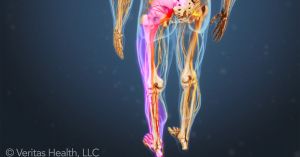
Dr. Daniel Batlan
As a pain management specialist in Las Vegas, Nevada, Dr. Daniel Batlan treats conditions that cause significant pain. Acute and chronic pains often debilitate those who suffer from these conditions, leading to a significantly reduced quality of life. Pain management physicians like Dr. Batlan seek to improve the lives of their patients by identifying the causes of pain and applying therapeutic modalities to help them manage pain levels.
Before a physician can effectively treat pain, he or she must obtain an accurate diagnosis. In order determine the cause of pain, Dr. Batlan employs multiple techniques, including:
1. Compiling a detailed medical history: During this part of the process, Dr. Batlan asks about the patient’s subjective symptoms. Subjective complaints are symptoms self-reported by patients detailing their experiences, how frequently they occur, their intensity, and activities that cause them to worsen or improve. To obtain this data, Dr. Batlan has his patient to complete medical history forms, and he consults with them to gain a more in depth understanding of pertinent background information.
2. Acquiring past medical records: A patient’s past medical history may shed light on his or her current condition. Accordingly, Dr. Batlan may request records, labs, and imaging studies ordered or performed by previous health care providers.
3. Conducting a physical examination: Physical examinations provide Dr. Batlan with objective findings that demonstrate medical evidence of conditions that may be present. Along with obtaining basic vital signs, Dr. Batlan may conduct in-office studies that test range of motion, reflexes, and neurological function.
4. Taking images: In order to obtain further objective evidence, Dr. Batlan may order imaging studies that allow him to see structural and internal issues contributing to pain conditions. Some of these studies include X-rays, ultrasound, or magnetic resonance imaging (MRI).
5. Requesting laboratory tests: Dr. Batlan may also order labs, such as blood tests or urinalysis to look for chemical or biological elements present that may contribute to pain conditions.
6. Consulting with a specialist: In order to gain an accurate assessment, Dr. Batlan may also seek additional evaluation or consultation with specialists in related fields, such as neurology, rheumatology, or orthopedics.







